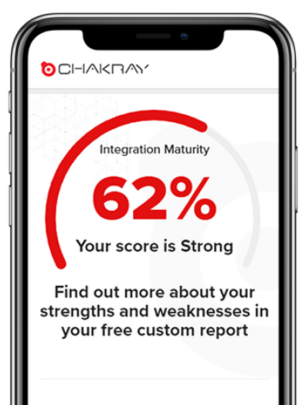The pandemic has changed the way insurers operate. Several processes such as sales, service, and others have been moved across to digital channels. In part, this context of transformation is motivated by various factors such as the need to adapt to a new generation of consumers, the constant technological evolution and digital innovation, the increasingly intensive use of data, the emergence of new distribution channels and last but not least, the new generation of digital start-ups.
The digital transformation is quickly changing the rules of the game in the insurance sector. However, there are some challenges in its adoption. Let’s take a more in-depth look in this article, as it’s important to be aware of them.
Top 8 digital transformation challenges for the insurance sector
Here you have the top 8 digital transformation challenges for the insurance sector:
1. Generate value through data
It’s important to understand how you want to use that data in a way that creates value. Only if you do that, it will be possible to determine the various uses of data: personalize the offer, improve the experience, retention of the client, etc. The Data Driven approach is very important for decision making in insurance companies.
2. Customer Experience
Get to know the customer better and figure out what it is what you really want and whether it fits your proposal. This bit of the process should occur throughout the customer lifecycle, from prospecting until the moment of withdrawal.
3. Ecosystem development
You need to be able to respond to new consumer demands, by branching out into other areas and new scenarios you are not used to. The policyholder wants end-to-end solutions, giving rise to ecosystems and alliances with other companies.
4. Co-request with Insurtech
Some Insurtechs focus on a specific area or problem and apply technological solutions. For traditional companies, a dilemma opens up between competing with them or collaborating by contributing with the best of their knowledge.
5. Omnichannel
Omnichannel provides a new and better experience for the client. It also generates new rich data that will facilitate its analysis and personalization of the business relationship.
6. Margin management
Like any business, insurance companies will pursue a positive ROI. However, the digital transformation of the insurance business can only reduce costs or increase them if the right decisions are made and the adoption of technology to create new business models based on it is defined as a goal.
7. Cybersecurity
Companies must remain extremely vigilant against threats in order to be able to safeguard customers’ data and their online platforms properly and responsibly.
8. Accelerating digital and cultural transformation
One of the most important challenges for insurers will undoubtedly be to adapt and reinvent themselves in the new digital environment, placing the customer at the center and taking advantage of digital innovation. For this, it is very important that the digital mindset is held throughout the organization, giving a global approach to digitalization programs, and that the entire organization is responsible for the change.
Opportunities for digital transformation in the insurance sector
Now, we’re going to talk about 8 opportunities for digital transformation in the insurance sector.
1. The possibility of launching very personalized and segmented offers
As they have a better knowledge of the customer and their digital experience, they are able to offer products and services that are adapted to the individual.
2. Increase in the automation of back-office operations
The potential to help companies transform their business, become more profitable, and better adjust to market changes. Automation is the lever that can help transform your operations, radically elevate your employee satisfaction, and overall improve your customer journey.
3. Greater integration with the different insurance distribution platforms
It allows you to add aggregators, brokers, etc. in order to make your platform richer.
4. Innovation in the creation of digital products
Agreements for the integration of insurance products into new digital business models such as collaborative platforms, ecommerce, and marketplaces.
5. Artificial Intelligence (AI)
Artificial Intelligence enables you to generate product recommendations based on the buying behavior of consumers. But the most important bit of AI is the impact it will have. The initial impact will be through improving the automation and efficiency of existing underwriting and claims processes for customers. Later on, the impact will be bigger as it will be able to identify, assess, and underwrite emerging risks and also identify new revenue streams.
6. Chatbots
Chatbots are revolutionizing the way insurance companies acquire, engage, and interact with their customers. These tools can enhance customer loyalty and brand engagement while lowering operational costs and increasing revenues.
7. Cloud computing
Cloud Computing is one of the most efficient ways for a company and their customers to connect and collaborate on the go. It is in fact a model that makes a set of services available over the network, which are supplied and consumed outside the company’s firewall. It will also help insurers develop collaboration capabilities and information sharing; it will also reduce the total cost of ownership of IT infrastructure.
The key to success for the insurance sector is to develop a holistic cloud strategy that can be implemented in the basic and non-basic functions of the insurance industry’s value chain.
8. Big data
Access to new data is revolutionizing the way the sector works. There are two data sources: online behavior and sensor data. By using big data analytics, insurance companies are able to offer personalized policies, assess risks, prevent fraudulent activities, and increase the efficiency of internal processes.
Conclusion
The pandemic has pushed us years ahead when it comes to adopting a digital way of working and living. In the case of the insurance sector, many were forced into making these changes to continue operations during the pandemic. It is time that insurers adopt this new way of functioning in order to bolster their operations, benefitting both the customers and the company itself.
At the end of the day, technology is the vector of development, a strategic tool that will let us undertake the very wanted transformation in the insurance sector. Those opportunities that we have mentioned above will satisfy the client and will place them at the center of the process.
Are you an insurance company and would you like to transform your business to obtain better results thanks to the implementation of new technological opportunities? Contact us for more information.








